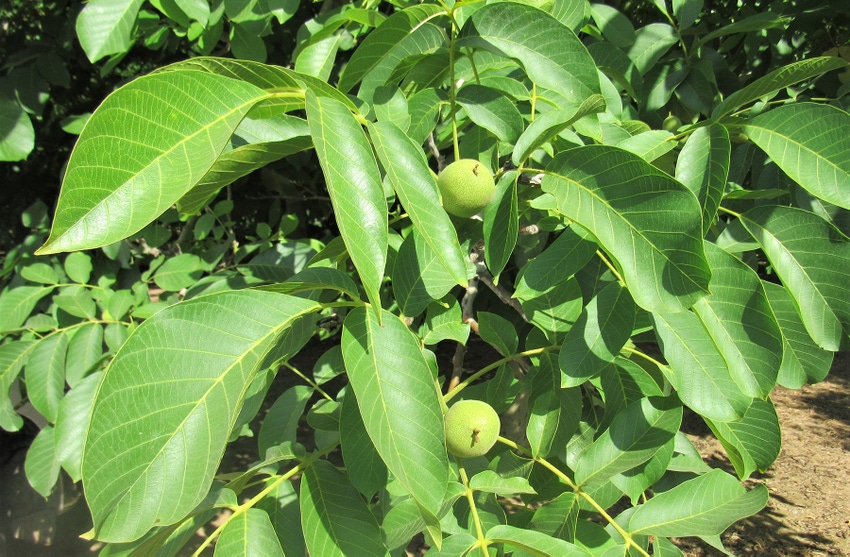
The official arrival of spring marks the end of the bloom and bee season for Western tree nut growers. Human enterprise in the orchard has replaced pollinator activity as the driving force in the next chapter of the growing season.
As orchard operators turn to warm weather tasks, concern for weed and pest management take the stage. By now most traps have been set and tree inspection for pest or disease pressure is underway, while other types of challenges outside the orchard continue to play on the minds of many growers.
April represents that time of year when not only orchard tasks are ramping up, but concern for other aspects of production are surfacing, things like marketing strategy in a challenged trade environment. Collectively it could be termed the time for the tree nuts and bolts of the business, when farming a quality nut crop shares the spotlight with the business of marketing the products we grow and establishing buyers on the other end.
As April quickly moves us towards May, here are some of the things most likely on your mind this time of year, in no particular order.
Weather, bloom and bee hours
There is still a lot of talk about moisture, in some instances the incredibly wet and often cold winter-spring season across California, and the impact it may have or will cause as the weeks unfold. The up and down sides of the issue are whether it might affect yields related to subdued pollinator activity or prove to be a benefit in the long run because of extra ground moisture – or a combination of both.
Dani Lightle, the University of California Cooperative Extension’s (UCCE) Glenn County orchard systems advisor, offers up some interesting research and observations in one of her latest Almonds Blog posts for growers who measure their pollinator success by total bee hours. With the cooperative input from UCCE farm advisors Joe Connell (Butte County, Emeritus) and Franz Niederholzer (Colusa, Sutter/Yuba Counties), and beekeepers Randy Oliver and Joe Traynor, there are other factors that should be considered. Read the blog post for some interesting details.
Speaking of weather and water availability, the Bureau of Reclamation last week issued updated allocations for Central Valley Project contractors for the 2019.
“The precipitation we’ve experienced since mid-February has provided a significant boost to the projected water supply for the Central Valley Project this year,” said Mid-Pacific Regional Director Ernest Conant in a press release. “With the improved CVP storage conditions and the latest runoff forecasts, we are pleased to increase the amount of water allocated to many of our water service contractors.”
The three updated allocation areas include:
North of the Delta, in-Delta and American River contractors’ allocations, for both agricultural water service and municipal and industrial service contractors, are increased to 100 percent.
South-of-Delta agricultural water service contractors’ allocations are increased to 55 percent of their contract total.
South-of-Delta allocations for municipal and industrial contractors’ allocations are increased to 80 percent of their historic use.
BOR said this update reflects the benefits of the series of storms that brought significant precipitation to California during February and early March. How much this may benefit agriculture remains uncertain, but more water availability in general is always a good thing.
Orchard Management: Budbreak to Early Summer
If you’re looking for sound advice across a host of orchard management topics like irrigation, blight sprays and Bot canker, Codling moth and pheromone traps, scale crawlers or foliar zinc issues for walnuts, check out the latest Sac Valley Walnut News Issue Spring issue (#35).
You’ll find a wealth of information that takes you through this next critical quarter of the growing year with advice on many topics.
Also, if you missed Mark Jansen’s Almond Insights concerning 2018 almond crop harvest numbers from Blue Harvest, in mid-March the number reached 2.262 billion pounds with shipments of California almonds up 3.5 percent. Blue Diamond’s Bill Morecraft reports that with this year’s strong demand matched against a supply that looks to be 30 million pounds smaller than last year, prices should remain firm into the harvest of the 2019 crop.
Limited Specialty Crop Grant opportunity
The California Department of Food and Agriculture (CDFA) is now accepting limited proposals for the 2019 Specialty Crop Block Grant Program (SCBGP).
The CDFA 2019 SCBGP Request for Concept Proposals set aside up to $3 million for proposals submitted through a separate process to support beginning and socially disadvantaged specialty crop farmers - including urban farmers - and/or to promote increased access or nutrition education in underserved communities throughout California.
Specialty crops include fruits and vegetables, tree nuts, dried fruits, horticulture, and nursery crops (including floriculture). Please review the 2019 Limited Request for Proposals for detailed application instructions. You can review this available grant opportunity and other offerings at the CDFA website.
Ongoing trade concerns
According to the American Farm Bureau Federation, a review of the final USDA data, the numbers indicate the U.S. lost $10.4 billion worth of ag exports to China from 2017 to 2018, which is a 53 percent drop in a single year, an indication of the early damage caused by the current trade dispute.
While those numbers affected U.S. growers differently in each state, California remarkably fared better than most. The big losers were soybean states in the Mid-South, Upper Mid-West and significant losses for some Western states. But analysts say if a positive trade resolution doesn’t come soon, any increase in the war of tariffs will bite deeper for almost all U.S. agricultural interests, including California.
About the Author(s)
You May Also Like






